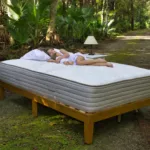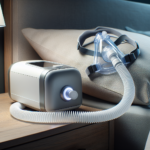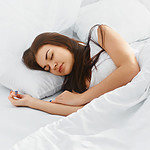Discover the Best Position to Sleep for Sleep Apnea Relief
Table of Contents
If you’re looking for the best position to sleep for sleep apnea, you’ve likely had many restless nights. Side, stomach, or elevated head—finding the right sleep position can be life-changing for your sleep health. Read on as we dive into which positions are recommended by experts and why they could be key to a better night’s sleep.
Key Takeaways
Sleeping on one’s side, particularly on the left side, can alleviate obstructive sleep apnea symptoms and is preferable for heart health, while back sleeping is the least ideal as it can cause airway obstruction.
Elevating the head during sleep, using adjustable beds or wedge pillows, can significantly reduce the severity of sleep apnea and improve oxygen saturation, whereas stomach sleeping may relieve symptoms but can cause neck and back pain.
In addition to adjusting sleep positions, managing sleep apnea effectively includes lifestyle changes such as weight management, avoiding alcohol and smoking, and using CPAP therapy or alternative treatments.
Understanding Sleep Apnea

Sleep apnea, a common sleep disorder affecting up to 26% of adults in the US, is characterized by the stopping and starting of breathing during sleep. The most common form, obstructive sleep apnea, occurs when the muscles in the back of the throat relax, leading to narrowing or closure of the airway. This can result in a range of symptoms, including loud snoring, disrupted sleep, and daytime fatigue, potentially leading to more serious health issues such as depression, anxiety, and cardiovascular problems if left untreated.
Causes of Sleep Apnea
Sleep apnea can be caused by a variety of factors, including:
Excess weight
Narrowed airway
Older age
Consumption of alcohol or sedatives
Smoking
Nasal congestion
These are just a few of the risk factors associated with obstructive sleep apnea (OSA).
In contrast, central sleep apnea (CSA) arises when the brain doesn’t transmit the necessary signals to the muscles responsible for breathing.Risk factors for CSA include:
Older age
Heart disorders
Use of narcotic pain medicines
Genetic conditions
Hormonal disorders
Increased amount of fat in the neck, tongue, and upper belly
These factors can contribute to the development of sleep apnea.
Symptoms of Sleep Apnea
Symptoms of sleep apnea can manifest both during the night and the day. Nocturnal symptoms include:
Loud snoring
Episodes of breathing cessation
Awakening with a dry mouth
Choking or gasping for air
Restless sleep
Frequent bathroom visits
Daytime symptoms of sleep apnea can include:
Excessive sleepiness and fatigue
Difficulty concentrating
Memory problems
Mood changes such as depression or irritability
Recognizing these symptoms is key to obtaining a sleep apnea diagnosis and starting a suitable treatment plan.
Health Risks Associated with Sleep Apnea
The consequences of untreated sleep apnea extend beyond night-time disturbances and daytime fatigue. Sleep apnea can lead to serious health complications, including:
High blood pressure
Cardiovascular problems
Type 2 diabetes
Metabolic syndrome
Liver problems
Complications with medications and surgery
In fact, sleep apnea is independently linked to an elevated risk of developing diabetes, regardless of an individual’s obesity status. Therefore, pursuing sleep apnea treatment to lessen these health risks and enhance your quality of life is imperative.
Optimal Sleeping Positions for Sleep Apnea Relief
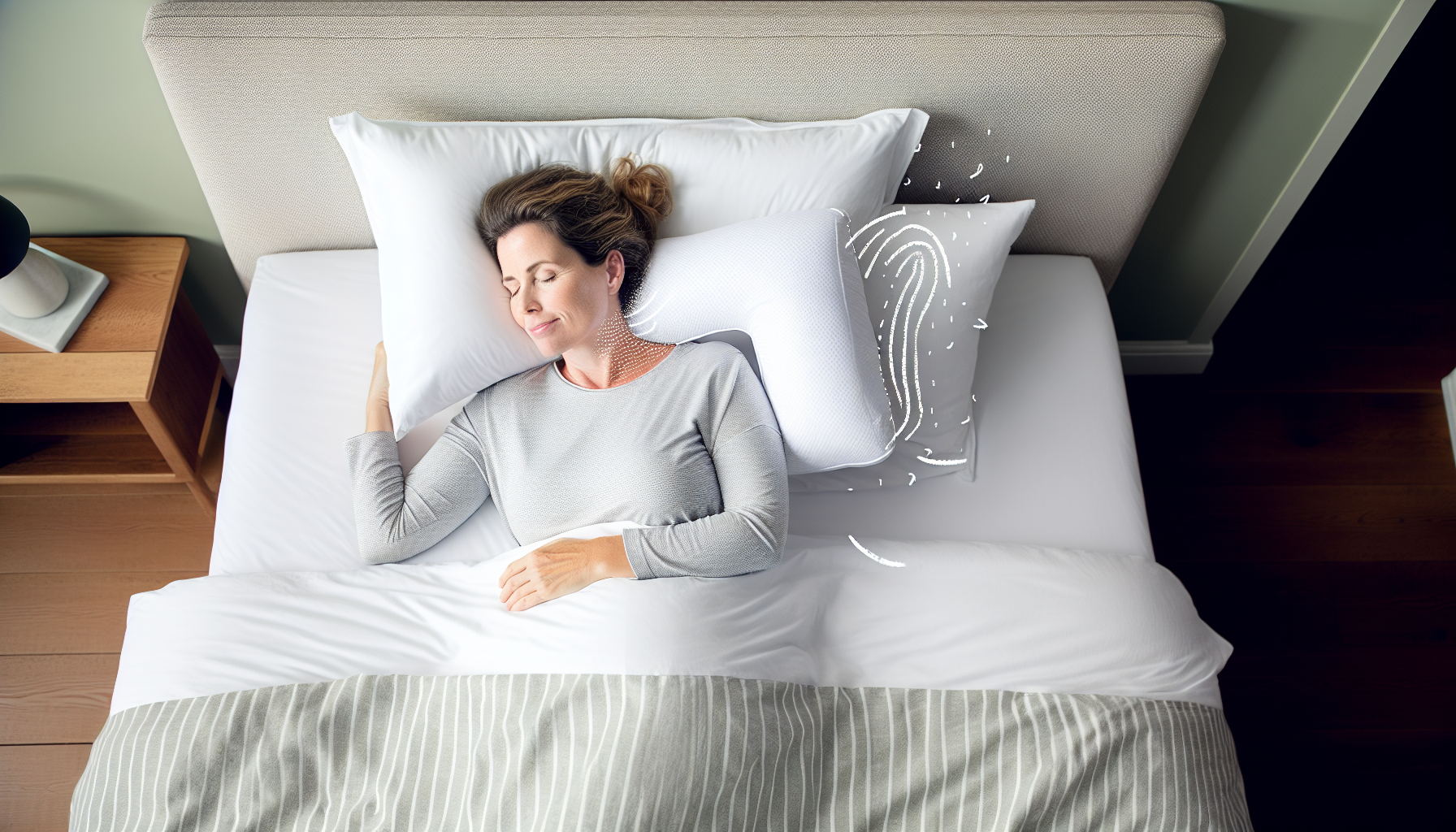
Considering the substantial effect sleep apnea can have on overall health and quality of life, investigating all potential treatment methods, including your sleeping position, can be beneficial. Yes, the way you position yourself in bed can make a world of difference in controlling, reducing, or even exacerbating sleep apnea episodes.
Embracing beneficial sleeping positions, like sleeping on your side or raising your head, can markedly alleviate sleep apnea symptoms, leading to a more restful sleep.
Side Sleeping: Left vs. Right Side
Sleeping on your side, particularly on your left side, is often recommended for those with sleep apnea. This position has several benefits:
It prevents the tongue and soft tissues from obstructing the airway, which could otherwise worsen snoring and obstructive sleep apnea.
Left-side sleeping is also advantageous for heart health.
It can alleviate symptoms of gastroesophageal reflux disease (GERD) at night.
While left-side sleeping offers specific advantages, side sleeping in general, including on the right side, is beneficial for reducing snoring and improving airflow in individuals with sleep apnea.
Stomach Sleeping: Pros and Cons

Stomach sleeping is another position that can help reduce snoring and diminish sleep apnea symptoms by preventing the tongue from blocking the airway. However, this position is not without its drawbacks. Sleeping on the stomach may cause neck and back pain due to the head being turned to one side for an extended period.
To prevent sleep apnea symptoms while stomach sleeping, it is recommended to position the forehead on a pillow and keep the head facing down.
Elevating the Head: Benefits and Techniques
Elevating the head during sleep can have several benefits for individuals with obstructive sleep apnea:
It can significantly improve sleep apnea severity without affecting sleep architecture.
This position can effectively reduce the apnea-hypopnea index.
It can enhance minimum oxygen saturation in patients.
It can mitigate snoring.
It can reduce the frequency and severity of sleep apnea episodes.
Various head elevation techniques can be used, such as adjustable beds, specialized wedge pillows, and even elevation of the bed’s legs to achieve an optimal angle that supports the upper airway structures.
Ineffective Sleeping Positions for Sleep Apnea
While some sleeping positions can relieve sleep apnea symptoms, others may worsen them. Two positions often found to be ineffective for sleep apnea sufferers are back sleeping and curling up. These positions can exacerbate breathing difficulties and acid reflux, both of which can disrupt sleep and worsen sleep apnea symptoms.
Back Sleeping: Why It’s Not Ideal
Back sleeping is considered the worst sleeping position for individuals with sleep apnea. When sleeping on the back, the tongue and soft tissue can fall backwards, causing the airway to become obstructed and reducing oxygen flow. This position leads to increased snoring and frequent awakenings, making it the least ideal sleeping position for sleep apnea sufferers.
Curling Up: The Impact on Breathing and Acid Reflux
Curling up, or sleeping in the fetal position, can also negatively impact sleep apnea management. This position:
Alters the space available in the lungs and affects the breathing rate, potentially exacerbating sleep apnea symptoms due to reduced airflow
Puts pressure on organs
Disrupts the natural alignment of the spine
To minimize acid reflux and manage sleep apnea more effectively, it is advisable to avoid curling up while sleeping.
Tips for Transitioning to a New Sleep Position
Although the prospect of altering your sleeping position may seem intimidating, various strategies can ease this transition. Gradually adding or repositioning pillows can make the transition more comfortable, and upon waking during the night, repositioning yourself can reinforce the new sleep position until it becomes more habitual.
We’ll explore these strategies in greater depth to aid your transition towards a sleep position that is more conducive to managing sleep apnea.
Using Pillows for Support and Alignment
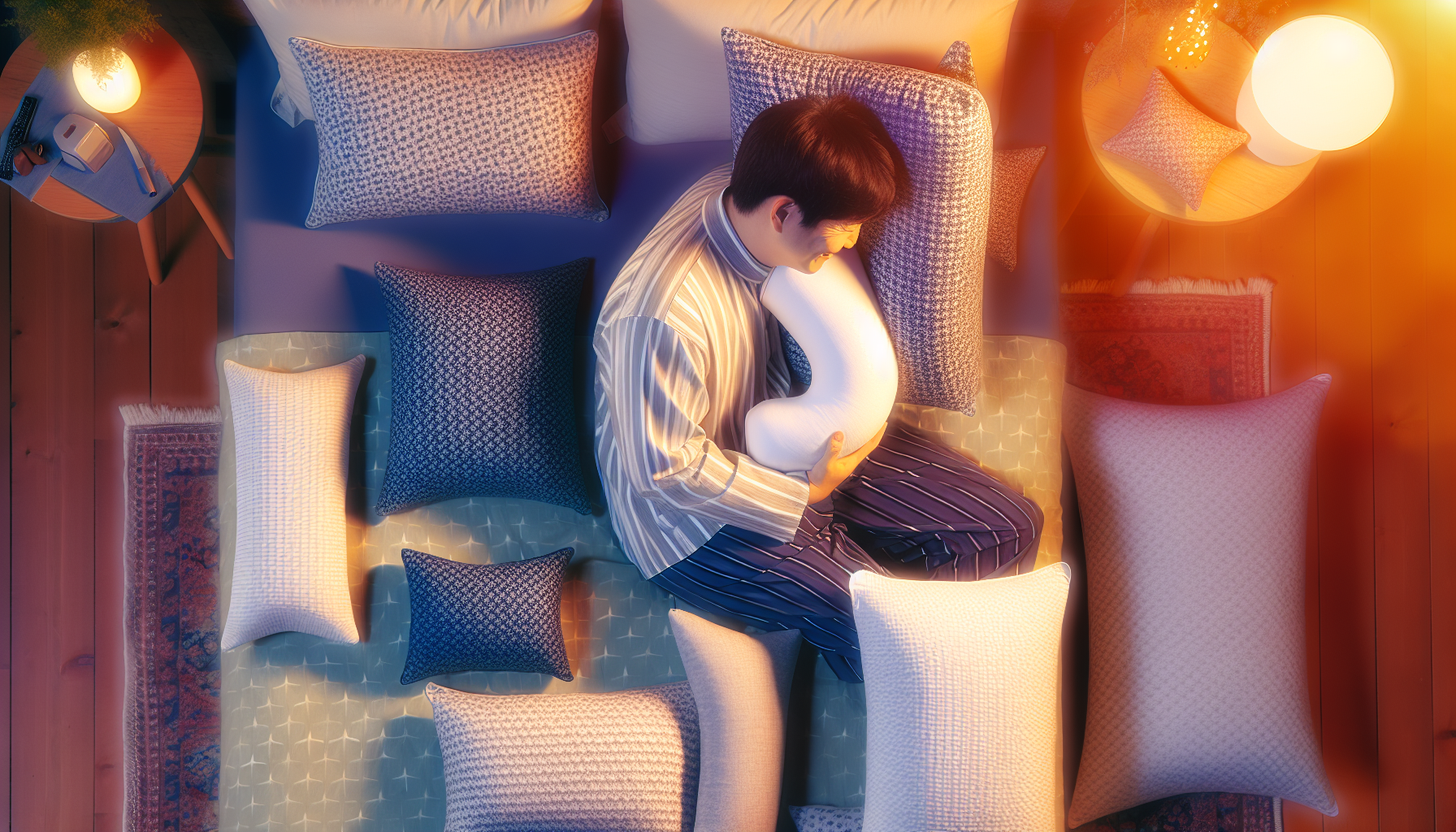
One of the most effective ways to transition to a new sleep position, or even find the best sleeping position for yourself, is by using supportive pillows. Quality foam pillows can conform to the shape of the head and neck, supporting the body in an optimal sleep posture for aligned spine and neck and facilitating easier breathing in various sleep positions.
Body pillows can be strategically used to maintain a new sleeping position and prevent rolling into a less favorable one during sleep. There are also specialized pillows like wedge pillows and knee pillows that can make side sleeping more comfortable and alleviate pressure on hips, knees, and ankles.
Sleep Position Trainers and Devices
Sleep position trainers and devices are innovative solutions designed to help individuals with sleep apnea maintain a healthy sleep position throughout the night. These devices, such as the Night Shift Sleep Positioner, Bumper Belt, and ZZOMA Positional Device, have unique mechanisms that prevent back sleeping and ensure side sleeping. They have been clinically validated and designed by sleep physicians, demonstrating their effectiveness in improving sleep quality for patients with mild to moderate positional obstructive sleep apnea.
Establishing a Consistent Sleep Routine
Establishing a consistent sleep routine is a key component of transitioning to a new sleep position. Setting a consistent bedtime and wake-up time every day helps to regulate the body’s internal clock and promote better sleep. Engaging in relaxing activities before bed, such as taking a warm bath or practicing relaxation techniques, can help prepare the body for sleep.
Practicing mindfulness meditation before bed can also ease the mind, making it easier to fall asleep and achieve a good night’s sleep.
Additional Sleep Apnea Management Strategies
While embracing beneficial sleeping positions can effectively manage sleep apnea, it’s just one part of a broader approach. Other lifestyle changes, such as avoiding alcohol and smoking, incorporating exercise into one’s routine, and maintaining a healthy weight, can also play a significant role in managing sleep apnea.
Weight Management and Exercise
Excess weight, especially around the neck, can contribute to sleep apnea by causing fat deposits that block the upper airway. Therefore, weight loss can significantly reduce the severity of sleep apnea. Regular exercise not only aids in weight loss but also improves sleep quality and strengthens muscles, which can help reduce sleep apnea symptoms.
Incorporating a healthy diet and improving sleep hygiene are also vital components of effective sleep apnea management.
Avoiding Alcohol and Smoking
Alcohol and smoking can exacerbate sleep apnea symptoms. Alcohol relaxes the throat muscles, leading to increased risk of airway obstruction, while smoking causes inflammation in the airways, worsening sleep apnea symptoms.
Therefore, abstaining from alcohol, particularly before bedtime, and quitting smoking can significantly improve sleep quality and lessen sleep apnea symptoms.
CPAP Therapy and Alternative Treatments
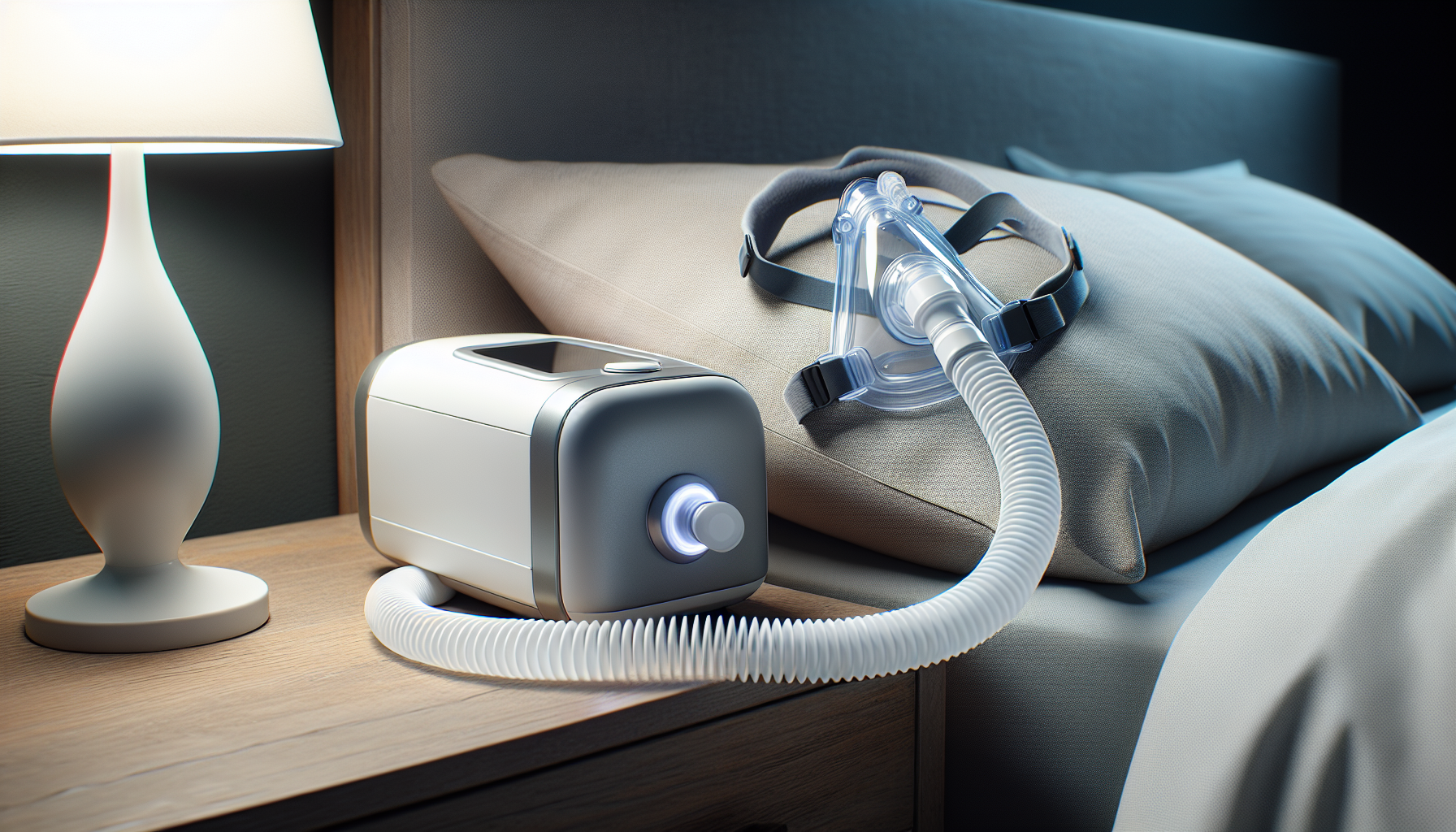
Continuous Positive Airway Pressure (CPAP) therapy, also known as CPAP treatment, remains the most commonly recommended solution for sleep apnea. This therapy involves:
A machine that pumps air through a mask into the airway to keep it open
Reducing blood pressure
Improving wakefulness
Lessening the risk of cardiovascular complications.
There are also alternative treatments available, such as:
Oral appliances
Myofunctional therapy
Surgical interventions
The use of HEPA air purifiers to improve sleep quality and manage sleep apnea effectively.
Expert Advice from Sleep Specialists
While this guide provides a comprehensive overview of sleep apnea management, it’s always best to seek advice from sleep specialists. These experts, such as Dr. Abhinav Singh, MD, Medical Director of the Indiana Sleep Center and a Sleep Medicine Physician, provide valuable expertise on sleep apnea management.
Online platforms like SleepCare also offer patients access to sleep practitioners and expert advice on how to treat sleep apnea, as well as providing guidance on sleep apnea treatment.
Creating a Sleep-Friendly Environment
Another crucial approach to managing sleep apnea is to create an environment conducive to sleep. This not only involves selecting the right mattress and pillows but also ensuring the sleep space is clean, dark, and quiet.
We’ll examine how these elements can enhance your sleep quality and aid in successful sleep apnea management.
Choosing the Right Mattress and Pillows
A supportive mattress like our firm organic mattresses is crucial for sleep apnea sufferers to find a comfortable position that alleviates breathing difficulties. Memory foam mattresses are particularly beneficial for maintaining spinal alignment and relieving joint pressure in side sleeping positions.
Specialized pillows, such as wedge pillows and knee pillows, can also make side sleeping more comfortable and alleviate pressure on hips, knees, and ankles.
Maintaining a Clean and Dark Sleep Space
Maintaining a clean and dark sleep space is essential. Exposure to light during sleep can disrupt the body’s circadian rhythm, affecting sleep quality, while dust and allergens can trigger respiratory issues that exacerbate sleep apnea symptoms.
Using blackout curtains or a sleep mask can help achieve complete darkness, aiding in uninterrupted sleep. Regular cleaning reduces the presence of irritants and allergens, contributing to better sleep apnea management.
Reducing Noise and Distractions
Reducing noise and distractions is another important factor in creating a sleep-friendly environment. Some ways to reduce noise and create a peaceful sleep environment include:
Using noise-masking earbuds playing soothing sounds
Using a white noise machine
Closing windows and using heavy curtains to block out external noise
Using earplugs
These strategies can help sleep apnea patients by masking disruptive noises, thereby improving the overall quality of sleep.
Additionally, earplugs with a high Noise Reduction Rating (NRR) are essential for sleep apnea patients as they block more decibels of noise, leading to fewer sleep disturbances.
Summary
Sleep apnea is a common condition that can have serious health implications if left untreated. However, with the right strategies, including adopting optimal sleeping positions, making lifestyle changes, and seeking expert advice, it can be effectively managed. Remember, the journey towards better sleep and improved health is a personal one. Keep exploring, stay consistent, and find what works best for you. Here’s to better sleep and healthier, happier days ahead!
Frequently Asked Questions
What is the best position to sleep if you have sleep apnea?
To alleviate sleep apnea symptoms, the best sleep position is on your side or stomach, as it helps keep the airways open and reduces snoring. Avoid sleeping on the right side if you suffer from heartburn.
Does sleeping with head of bed elevated help with sleep apnea?
Elevating the head of your bed can help reduce sleep apnea symptoms by decreasing the apnea-hypopnea index and increasing minimum oxygen saturation, as shown in a study with 52 patients. This adjustment improved sleep architecture and may be beneficial for individuals with sleep apnea.
How can I sleep better at night with sleep apnea?
To sleep better with sleep apnea, try losing weight, exercising, avoiding alcohol and certain medications, sleeping on your side or stomach, and keeping your nasal passages open while you sleep. These measures can help relieve airway constriction and improve your sleep quality.
Is a higher or lower pillow better for sleep apnea?
A higher pillow is better for sleep apnea as it can help elevate the head, reduce pressure on the cervical spine, and potentially alleviate symptoms of sleep apnea.
What are the benefits of side sleeping for sleep apnea sufferers?
Side sleeping, especially on the left side, can help prevent airway obstruction and improve symptoms of obstructive sleep apnea, snoring, and GERD, while also promoting heart health.



